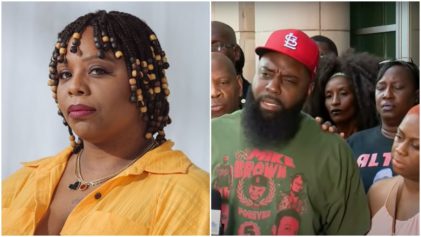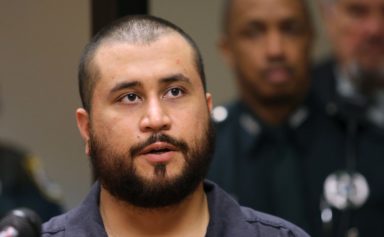
Brown was shot at least six times by Wilson in the afternoon in the middle of the street in Ferguson, Missouri, touching off protests and demonstrations in the town outside of St. Louis and around the country.
The disappointment in the Justice Department conclusion is tangible in the Black community, a painful confirmation of a general discounting of Black lives. Last week it announced that George Zimmerman did not violate teenager Trayvon Martin’s civil rights when he killed him as he was attempting to return to his father’s home in Florida. A grand jury in New York refused to file charges against officer Daniel Pantaleo, 29, in the choke-hold death of Eric Garner, 43.
On the heels of President Obama’s task force calling for a law enforcement overhaul, results from the Justice Department like this reopens a sensitive wound that started—and revitalizes—the #BlackLIvesMatter campaign. And it renders Obama’s panel findings weak.
The disappointment and outrage are heightened by the rhetoric that comes with these investigations. Always, the police departments are found to conduct racially biased business, and yet, when they kill an unarmed Black man, there is no violation of his civil rights.
The Justice Department’s investigation revealed that Ferguson police conduct stops without reasonable suspicion and make arrests without probable cause. It said African-Americans in Ferguson were more likely to be charged with petty offenses and held longer in jail than other races. It led to new calls for the city’s police chief and the mostly white leadership in the city with a majority Black population to step down.
“He absolutely should not have that job any more,” St. Louis-area lawyer Brendan Roediger, who has helped represent some of those protesting police actions, said to Reuters about the police chief, Tom Jackson.
Law enforcement officials even engaged in sending racist emails about Blacks and the president and First Lady. One depicted President Obama as a chimpanzee. Another included a photo of topless African women with the caption, “Michelle Obama’s high school reunion.”
This kind of base, gutter racism shows the mindset of a force charged with patrolling a mostly Black town—and the attitudes officers likely have when they interact with residents. It’s easy to see why situations can escalate so quickly.
The predictable Wilson decision came after a lengthy investigation into the shooting last August. Many witnesses said Brown had his hands up in surrender when he was riddled with bullets, including one at the top of his head, leading to nationwide protest chants of “Hands up, don’t shoot.”
When the Missouri state grand jury refused to put Wilson on trial in the controversial, polarizing shooting, it stood to reason the Justice Department would follow suit. The Justice Department said forensic evidence and other witnesses backed up the account of Wilson, who said Brown fought with him, reached for his gun, then charged at him. He told investigators that he feared for his life, which is the true gray area in all this.
“There is no evidence upon which prosecutors can rely to disprove Wilson’s stated subjective belief that he feared for his safety,” the report said.
In the Black community, “fear for his safety” is code for an excuse to shoot without fear of prosecution.
Unlike the state investigation, the Justice Department’s inquiry produced a lengthy public report explaining the legal conclusions and its analysis. It said witnesses who said Brown held his hands up as he was shot were “not credible” because some also said he charged Wilson with his hands down. And it concluded blood-stain evidence backed Wilson’s version.
The law requires prosecutors to prove that Wilson willfully violated Brown’s civil rights when he shot him. Courts have given officers wide latitude when deciding when to use deadly force if they feel their lives are in danger.


